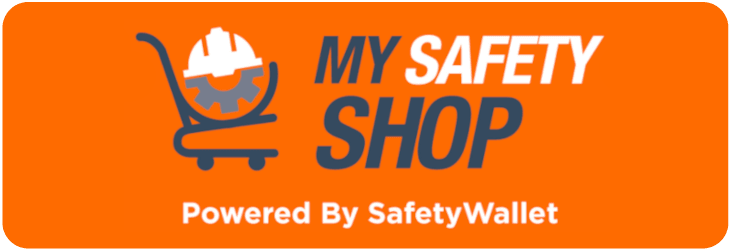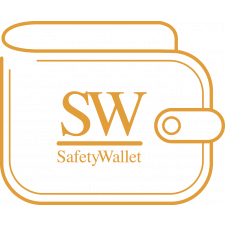Generic Health and Safety Risk Assessment
Overview
Amidst the numerous types of risk assessment, there are five distinctive types in health and safety and this article serves as a guide to them, how they can be used, and when.
It is imperative to keep in mind that different types of risk assessment can be used in conjunction with one another with some parts of each that may be present in a single assessment.
A health and safety risk assessment considers the hazards in a specific task or an activity. It considers the likelihood that harm may occur, the severity of the harm, and what can be done to prevent it.
A risk assessment contains five different steps, namely:
- Step 1 – Hazard identification
- Step 2 – Deciding who may be harmed, and how.
- Step 3 – Evaluating the risks and deciding on the precautions.
- Step 4 – Recording the significant findings.
- Step 5 – Reviewing the risk assessment and updating it if, and when, necessary.
Despite the type of risk assessment, the assessor must have experience in the type of work in which they are conducting an assessment. This ensures that they know what hazards must be managed. They must also be competent in the risk assessment process to ensure that they can identify high risks and implement appropriate actions.
Qualitative Risk Assessment
Qualitative risk assessments are the most common type that can often be seen in workplaces. This type of risk assessment is based on the personal judgement and the expertise of the assessor. The assessor will typically use their own experience in addition with consulting with others that carry out the associated task being assessed, and lastly, use best practice to guide them.
Any generic risk assessment starts with a simple qualitative assessment where the risks are categorised into risk levels ranging from high, medium, to low.
This qualitative risk assessment considers the risk of an employee being injured and whether the likelihood is high, medium, or low. As with any other type of risk assessment, high risks must be addressed as a matter of urgency while low-level risks can be addressed later.
During a qualitative risk assessment, the risk is calculated by the severity of harm multiplied by the likelihood thereof. It involves making an informed and formal judgement on the consequence, or severity, and the probability, or likelihood.
Quantitative Risk Assessment
Quantitative risk assessment is used to measure the risk by assigning a numerical value to it. When this type of risk assessment is carried out, it will typically be done with significant hazards such as complex chemical plants, mining operations, and other major hazards.
Quantities that are measured could be the presence of hazards that arise from chemicals or machinery, and these assessments may assign numbers to different levels of risk, such as used in the 3 x 3, or the 5 x 5 risk matrix.
However, this does not convert the qualitative risk assessment into a quantitative risk assessment. If the risk assessment being carried out is still based on the judgement of the assessor by assigning risk values, the risk assessment is typically a qualitative assessment.
A qualitative risk assessment may sometimes become semi-quantitative, for instance when some hazards or aspects are measured whereas others are merely based on judgement.
Generic Risk Assessment
Generic health and safety risk assessment cover a variety of common hazards for a task or an activity. The idea behind these types of risk assessment is to cut down on the duplication of both effort and paperwork.
This type of risk assessment will consider the hazards for an activity in a single assessment, where the activity can be carried out across a variety of areas of the workplace, or for different sites.
A generic risk assessment is therefore typically used for activities and equipment that are similar across several sites, departments, or organisations. It can act as a risk assessment template as it covers a variety of hazards and risks that are often present for a specific activity.
It is important to consider that even while tasks from an activity may be common, there are changes in the environment that can occur and subsequently affect risk levels, often introducing new hazards.
Site-Specific Risk Assessment
This type of risk assessment is one that can be completed for a specific item of work and which considers the location of the site, the environment, and the people that are carrying out the task.
The site-specific risk assessment can either be qualitative, or quantitative. This type of risk assessment does more than just consider common hazards. It also addresses unusual hazards and risks.
Dynamic Risk Assessment
Dynamic risk assessment form part of a process where risks are assessed in an on-the-spot situation. These types are typically used to handle unknown risks and uncertainty. It can be used by emergency services, care workers, or other types of personnel who must deal with developing and changing situations.
These types of environments require consistent and continuous assessment and if significant changes arise, the original risk assessment and its validity must be considered, whether it is safe to continue, or whether there should be an attempt to handle the situation.
It is not always possible to prepare for every hazard or their associated risks. It is for this reason that a written risk assessment must assess the level of unknown risks and where an element of dynamic risk analysis is required, employees must possess the skills and awareness to recognise the danger and be able to manage it safely.
How does SafetyWallet support its subscribers?
SafetyWallet, in partnership with MAKROSAFE and OHS Online, ensures that subscribers can obtain the highest level of compliance with the Occupational Health and Safety Act, all other Regulations, and more.
MAKROSAFE have been assisting clients for more than 23 years with recommendations and risk assessments for a hazard-free environment.
MAKROSAFE / SAFETYWALLET / MY SAFETY SHOP are all in Partnership.
Through the assistance and support in the health and safety programme of the subscriber, SafetyWallet helps subscribers with the health and safety risk assessments that must be conducted to ensure that subscribers are compliant in providing a healthy and safe working environment.
Click on the image below to find a SafetyWallet Solution that suits your business (Branch/Site specific) and get the benefits along with the subscription:
Keeping your workplace legally Health and Safety Compliant may seem like a daunting task. At MAKROSAFE, we have an experienced team of OHS experts available to assist in keeping your company Health and Safety Compliant according to South African Occupational Health and Safety Act 85 of 1993 and Regulations.
The MAKROSAFE Health and Safety Risk Control Package will assist you with your Risk Management Programme.
By signing up with our Health and Safety Risk Control Package, MAKROSAFE will assist you with your Risk Management journey.

-Generic-Health-and-Safety-Risk-Assessment-Banner-1.jpg)





Comments (2)
A health and safety risk assessment considers the hazards in a specific task or an activity. It considers the likelihood that harm may occur, the severity of the harm, and what can be done to prevent it.
2022-09-28 14:01:00Dear Aditya Thank you for your comment... I do agree with you that a health and safety risk assessment considers the hazards in a specific task or an activity. It considers the likelihood that harm may occur, the severity of the harm, and what can be done to prevent it. By implementing and maintaining your Risk Assessment you will be making sure your loved ones return home safe after work.
2022-09-29 07:46:40Nice article.
2022-09-01 13:42:51Dear Rubini Thank you for your comment, we really do appreciate it...
2022-09-29 07:41:55